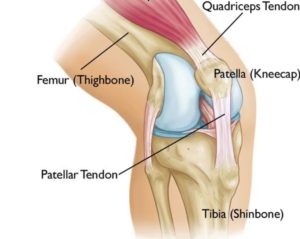

What do we know about treatment of knee pain?
CORE Physical Therapy In Omaha Explains…
By Dr. Mark Rathjen PT DPT CSCS
CORE Physical Therapy Co-owner
17660 Wright street sites 9/10
Omaha NE
402-933-4027
Anterior knee pain is treated in many phases.
- Reducing inflammation, and mechanical analysis
- Full symmetry of strength and ROM of the knee and hip
- Full integrations of dynamic functional balance and strength training
- Full reprograming of motor pattern integration for elimination of mechanical factors.
Special note: The hip and the ankle drastically effect the knee and often are the real issues with the causation of pain. Mechanical compensation also is important to ensure proper integration of rehabilitation strength, and sports performance.
Original Article.
Anterior knee pain: an update of physical therapy
- PMID: 24997734
- DOI: 10.1007/s00167-014-3150-y
Abstract
Anterior knee pain is one of the most common knee problems in physically active individuals. The reason for anterior knee pain has been suggested to be multifactorial with patella abnormalities or extensor mechanism disorder leading to patellar malalignment during flexion and extension of the knee joint. Some patients complain mostly of non-specific knee pain, while others report patellar instability problems. The patients present with a variety of symptoms and clinical findings, meaning that a thorough clinical examination is the key for optimal treatment. Weakness of the quadriceps muscle, especially during eccentric contractions, is usually present in the majority of anterior knee pain patients. However, irrespective of whether pain or instability is the major problem, hypotrophy and reduced activity of the vastus medialis are often found, which result in an imbalance between vastus medialis and vastus lateralis. This imbalance needs to be corrected before quadriceps exercises are started. The non-operative rehabilitation protocol should be divided into different phases based on the patient’s progress. The goal of the first phase is to reduce pain and swelling, improve the balance between vastus medialis and vastus lateralis, restore normal gait, and decrease loading of the patello-femoral joint. The second phase should include improvement of postural control and coordination of the lower extremity, increase of quadriceps strength and when needed hip muscle strength, and restore good knee function. The patient should be encouraged to return to or to start with a suitable regular physical exercise. Therefore, the third phase should include functional exercises. Towards the end of the treatment, single-leg functional tests and functional knee scores should be used for evaluating clinical outcome. A non-operative treatment of patients with anterior knee pain should be tried for at least 3 months before considering other treatment options.
Similar articles
-
Changes in patellofemoral joint contact pressures caused by vastus medialis muscle weakness.Clin Biomech (Bristol, Avon). 2012 Jul;27(6):595-601. doi: 10.1016/j.clinbiomech.2011.12.011. Epub 2012 Jan 5.PMID: 22226076
-
Alterations in patellofemoral kinematics following vastus medialis transection in the anterior cruciate ligament deficient rabbit knee.Clin Biomech (Bristol, Avon). 2014 May;29(5):577-82. doi: 10.1016/j.clinbiomech.2014.03.001. Epub 2014 Mar 19.PMID: 24703827
-
The effects of the sagittal plane malpositioning of the patella and concomitant quadriceps hypotrophy on the patellofemoral joint: a finite element analysis.Knee Surg Sports Traumatol Arthrosc. 2016 Mar;24(3):903-8. doi: 10.1007/s00167-014-3421-7. Epub 2014 Nov 15.PMID: 25398369
-
Patellofemoral pain syndrome.Knee Surg Sports Traumatol Arthrosc. 2014 Oct;22(10):2264-74. doi: 10.1007/s00167-013-2759-6. Epub 2013 Nov 13.PMID: 24221245 Free PMC article. Review.
-
Patellofemoral pain syndrome: a review of current issues.Sports Med. 1999 Oct;28(4):245-62. doi: 10.2165/00007256-199928040-00003.PMID: 10565551 Review.
At CORE Physical Therapy in Omaha, We specialize in the treatment of athletes. We have worked with athletes for a combined 30 years. CORE was established in 2015 by Dr. Mark and Dr. Claire Rathjen is family owned and operated.
We are proud to serve the greater Omaha metro area.
For More information, Please feel free to contact us http://coreomaha.com/contact/
Please feel free to follow us at https://www.facebook.com/COREomaha/
To get started http://coreomaha.com/getting-started/
For more Blog information http://coreomaha.com/blog/
Youtube Account linked below.
https://www.youtube.com/channel/UCVg8OSN5h-i1n_ykw1Gvahg?view_as=subscriber
